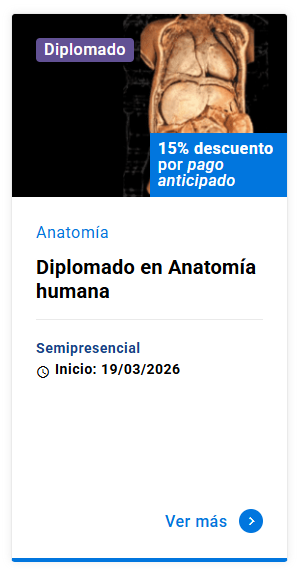Evaluación inicial del paciente con mareos y vértigo
DOI:
https://doi.org/10.11565/arsmed.v44i1.1373Palabras clave:
mareos, VPPB, servicio de urgencia.Resumen
El paciente que consulta por mareos o vértigo es sin duda un desafío para el médico que trabaja en un servicio de urgencia. Esto se da en parte por la dificultad de los pacientes de definir el síntoma, a la amplia gama de diagnósticos diferenciales y su potencial riesgo de desenlace negativo, como en el caso del accidente cerebrovascular de fosa posterior.
En esta revisión narrativa, el objetivo: es explicar el enfrentamiento inicial del paciente con mareos y vértigo, describir las pruebas y métodos diagnósticos complementarios, distinguir los diagnósticos diferenciales más frecuentes y explicar el manejo inicial. Método: se realizó una revisión bibliográfica de literatura científica sobre esta patología, basado en la propuesta de Edlow (2016), donde se enfatiza en un enfoque basado en temporalidad, factores desencadenantes y contexto del síntoma.
Descargas
Citas
Chalela JA, Kidwell CS, Nentwich LM, Luby M, Butman JA, Demchuk AM, Hill MD, Patronas N, Latour L & Warach S (2007) Magnetic resonance imaging and computed tomography in emergency assessment of patients with suspected acute stroke: a prospective comparison. Lancet 369, 293-298. DOI: https://doi.org/10.1016/S0140-6736(07)60151-2
Chang AK (2018). Dizziness and vertigo. In Rosen’s Emergency Medicine: Concepts and Clinical Practice, pp 145-152. Ed Elsevier.
Drachman D & Hart C. (1972) An approach to the dizzy patient. Neurology 22, 323-334. DOI: https://doi.org/10.1212/WNL.22.4.323
Edlow JA. (2016) A New Approach to the Diagnosis of Acute Dizziness in Adult Patients. Emergency Medicine Clinics of North America 34, 717-742. DOI: https://doi.org/10.1016/j.emc.2016.06.004
Fiebach JB, Schellinger PD, Jansen O, Meyer M, Wilde P, Bender J, Schramm P, Jüttler E, Oehler J, Hartmann M, Hähnel S, Knauth M, Hacke W & Sartor K. (2002) CT and diffusion-weighted MR imaging in randomized order: Diffusion-weighted imaging results in higher accuracy and lower interrater variability in the diagnosis of hyperacute ischemic stroke. Stroke 33, 2206-2210. DOI: https://doi.org/10.1161/01.STR.0000026864.20339.CB
Furman JM & Cass SP. (1999) Benign Paroxysmal Positional Vertigo. New England Journal of Medicine 341, 1590-1596. DOI: https://doi.org/10.1056/NEJM199911183412107
Kattah JC, Talkad AV, Wang DZ, Hsieh YH & Newman-Toker DE. (2009) HINTS to diagnose stroke in the acute vestibular syndrome: Three-step bedside oculomotor examination more sensitive than early MRI diffusion-weighted imaging. Stroke 40, 3504-3510. DOI: https://doi.org/10.1161/STROKEAHA.109.551234
Korres SG & Balatsouras DG. (2004) Diagnostic, pathophysiologic, and therapeutic aspects of benign paroxysmal positional vertigo. Otolaryngol - Head Neck Surgery 131, 438-444. DOI: https://doi.org/10.1016/j.otohns.2004.02.046
Kroenke K, Lucas CA, Rosenberg ML, Scherokman B, Herbers JE, Wehrle PA & Boggi JO. (1992). Causes of Persistent Dizziness: A Prospective Study of 100 Patients in Ambulatory Care. Annals of Internal Medicine 117, 898–904. DOI: https://doi.org/10.7326/0003-4819-117-11-898
Lee CC, Ho HC, Su YC, Brian CH Chiu, Su YC, Lee YD, Chou P, Chien SH & Huang YS (2012) Increased risk of vascular events in emergency room patients discharged home with diagnosis of dizziness or vertigo: A 3-year follow-up study. PLOS One 7, 1-9. DOI: https://doi.org/10.1371/journal.pone.0035923
Martín-Aragón S & Bermejo-Bescós P. (2011) Vértigo. Tratamiento farmacológico. Offarm 30, 74-79.
Merwick A & Werring D. (2014) Posterior circulation ischaemic stroke. BMJ 348, g3175. DOI: https://doi.org/10.1136/bmj.g3175
Morel L , Poblete R, Alvizú S, Cabrera D, Bellolio MF & Saldías F. (2007) Evaluación del paciente con mareos en la unidad de emergencia. Revista Chilena Medicina Intensiva 22, 260-266.
Murillo-González F & Víquez ZM. (2002) Vertigo: una visión otorrinolaringológica para la medicina general. Acta Medica Costarricense 44, 10-18. DOI: https://doi.org/10.51481/amc.v44i1.393
Newman-Toker DE, Cannon LM, Stofferahn ME, Rothman RE, Hsieh YH & Zee DS. (2007) Imprecision in patient reports of dizziness symptom quality: a cross-sectional study conducted in an acute care setting. Mayo Clinic Proceedings 82, 1329-1340. DOI: https://doi.org/10.4065/82.11.1329
Newman-Toker DE, Hsieh YH., Camargo CA, Pelletier AJ, Butchy GT & Edlow JA. (2008). Spectrum of dizziness visits to US emergency departments: cross-sectional analysis from a nationally representative sample. Mayo Clinic Proceedings. Mayo Clinic 83, 765–775. DOI: https://doi.org/10.4065/83.7.765
Saber Tehrani AS, Coughlan D, Hsieh YH, Mantokoudis G, Korley FK, Kerber KA, Frick KD & Newman-Toker DE. (2013) Rising annual costs of dizziness presentations to U.S. emergency departments. Academic Emergency Medicine 20, 689-696. DOI: https://doi.org/10.1111/acem.12168
Tarnutzer AA, Berkowitz AL, Robinson KA, Hsieh YH & Newman-Toker DE. (2011) Does my dizzy patient have a stroke? A systematic review of bedside diagnosis in acute vestibular syndrome. CMAJ 183, 571-592. DOI: https://doi.org/10.1503/cmaj.100174
Vanni S, Nazerian P, Casati C, Moroni F, Risso M, Ottaviani M, Pecci R, Pepe G, Vannucchi P & Grifoni S (2015) Can emergency physicians accurately and reliably assess acute vertigo in the emergency department? EMA - Emergency Medicine Australasia 27, 126-131. DOI: https://doi.org/10.1111/1742-6723.12372
Vanni S, Pecci R, C. Casati C, Moroni F, Risso M, Ottaviani1 M, Nazerian P, Grifoni S & Vannucchi P (2014) STANDING, a four-step bedside algorithm for differential diagnosis of acute vertigo in the Emergency Department. Acta Otorhinolaryngol Ital organo Uff della Soc Ital di Otorinolaringol e Chir Cerv-facc 34, 419-426.
Von Brevern M, Radtke A, Lezius F, Feldmann M, Ziese T, Lempert T & Neuhauser H (2006) Epidemiology of benign paroxysmal positional vertigo: a population based study. Journal of Neurology, Neurosurgery and Psychiatry 78, 710-715. DOI: https://doi.org/10.1136/jnnp.2006.100420
Descargas
Publicado
Cómo citar
Licencia
Derechos de autor 2019 ARS MEDICA Revista de Ciencias Médicas

Esta obra está bajo una licencia internacional Creative Commons Atribución-CompartirIgual 4.0.
Los autores/as conservan sus derechos de autor y garantizan a la revista el derecho de primera publicación de su obra, la que estará simultáneamente sujeta a la Licencia CC BY-SA 4.0 (Ver declaración de Acceso Abierto).







